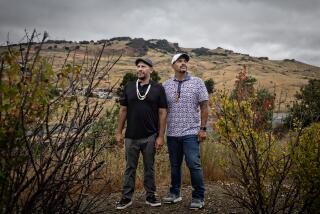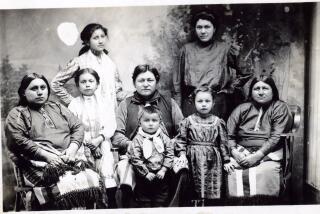20 Years Later, Legacy of Second Wounded Knee Clash Remains Unclear
- Share via
WOUNDED KNEE, S.D. — The first time whites and Indians clashed at Wounded Knee, the outcome was clear--the Indians were massacred. But after 20 years, the jury is still out on the second battle of Wounded Knee.
“We won in every way,” said Russell Means, a leader of the American Indian Movement band that seized this Pine Ridge reservation hamlet and held it for 71 days against federal authorities.
Former Gov. Bill Janklow disagrees. “I’ve never met a person who could convince me that good comes from violence,” he said, arguing that the fighting merely intensified racism, bitterness and fear in South Dakota.
In one sense, the bottom line is clear: Two members of the occupying group dead, nine people wounded, including a federal agent who was paralyzed.
On Feb. 6, 1973, AIM members and others rioted in Custer, a town near the Pine Ridge reservation, because state officials had refused to charge a white man with murder in the stabbing death of an Indian.
Some traditional Sioux elders then asked AIM for help in resisting Oglala Sioux Tribal President Dick Wilson, who openly detested AIM.
Means says that during a meeting in Pine Ridge, a group of traditional chiefs told AIM members to go to Wounded Knee, the site of an 1890 massacre in which Army troops killed more than 200 Sioux.
On the night of Feb. 27, about three dozen carloads headed to Wounded Knee and occupied several buildings. They sought to dramatize the U.S. government’s violation of the 1868 Ft. Laramie Treaty that had reserved western South Dakota and eastern Wyoming for the Sioux, and to draw attention to alleged corruption in the Bureau of Indian Affairs and Wilson’s tribal government.
The Indians proclaimed themselves the Independent Oglala Nation.
The FBI, U.S. Marshals Service and BIA police surrounded the camp, which at times held as many as 300 Indians. For 71 days--until the Indians gave up--the sides exchanged gunfire.
Jim Abourezk, then a Democratic U.S. senator, says the confrontation need not have dragged out. When Abourezk and fellow Sen. George McGovern visited Wounded Knee in the first few days of the standoff, Indian leaders said they were ready to end their occupation.
Abourezk says he told FBI officials the Indians were ready to surrender. ‘Nobody ever followed up on it from the government side.”
Eventually, scores of Indians were indicted, but only a few were convicted. A federal judge, citing government misconduct, dismissed the case against Means and Dennis Banks, another prominent AIM leader.
The AIM faction and supporters of Wilson’s tribal government exchanged gunfire for several years, and some think as many as 100 people died.
John Yellow Bird Steele, current president of the Oglala Sioux Tribe, says the two sides are patching up their differences and working together now. More Oglala now embrace traditional Sioux culture and tradition, and Steele says the Sioux are united in seeking the return of their sacred Black Hills.
“There’s a pride in being Indian. A lot of people grew up being ashamed of having brown skin,” Steele said.
Exactly, says Means.
“We fired the imagination of a self-dignity and a self-pride among all Indians of all age groups throughout North America,” he said. “We also alerted the entire world that American Indians in this hemisphere were still alive and resisting.
“That fact alone is so stupendous it cannot be measured. It’s still paying dividends to this very day in Indian country.”
Means has not lived sedately. He has led courthouse sit-ins, urinated on Mt. Rushmore and poured red paint on Plymouth Rock, been charged--and exonerated--in connection with a barroom death and led protests that stopped the Denver Columbus Day parade.
He also had a prominent role in the movie “The Last of the Mohicans.” Most of the time, he’s on the road, but he keeps a home on the Pine Ridge reservation. He is an unreconstructed radical.
“You can’t work with the enemy,” he said. “I’ve been everywhere in the Eurocentric society trying to find allies--I didn’t find any.”
His comrade, Banks, lives in northern Kentucky. He spent 10 years as a fugitive for his part in the Custer riot, then served about a year in prison.
Now he files complaints with the Federal Communications Commission to try to block broadcasts of games played by teams with the Indian nicknames. And he organizes the Sacred Run, an annual long-distance running event intended to renew the harmony between humans and the planet.
More to Read
Sign up for Essential California
The most important California stories and recommendations in your inbox every morning.
You may occasionally receive promotional content from the Los Angeles Times.










